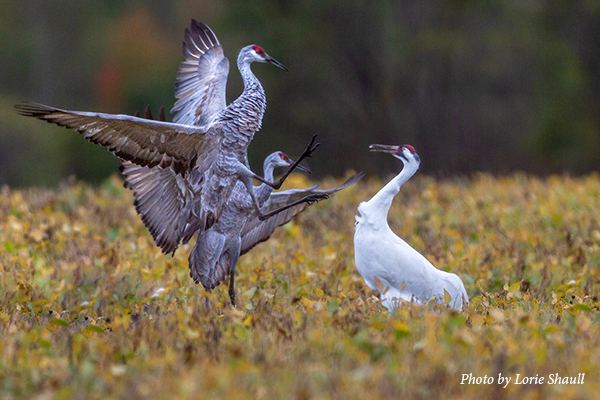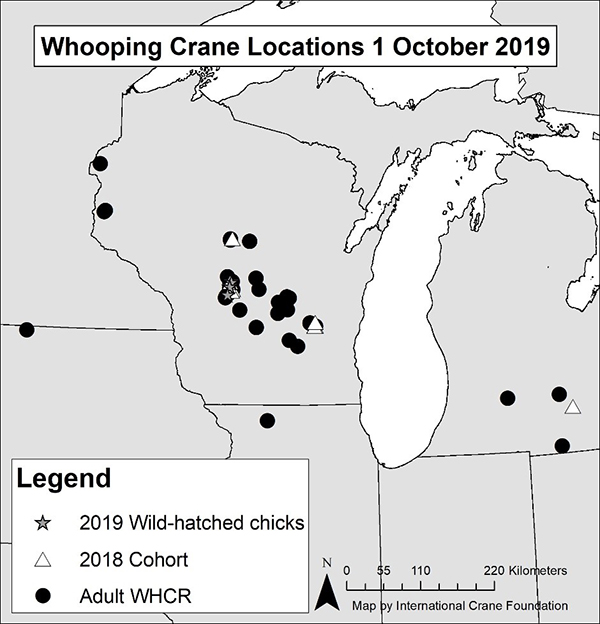
Below is the most recent update for the Eastern Migratory Population of Whooping Cranes. In the last month, Whooping Cranes have started moving around a bit but haven’t yet started fall migration. A huge thank-you to the staff of the Fish and Wildlife Service, the Departments of Natural Resources of flyway states, the International Crane Foundation, and all the volunteers who help us keep track of the cranes throughout the year. We appreciate your contribution to the recovery of the Whooping Crane Eastern Migratory Population. This report is produced by the International Crane Foundation for the Whooping Crane Eastern Partnership.
Population Estimate
The current estimated population size is 85 (40 F, 42 M, 3 U). This includes three wild-hatched chicks from 2019. To the best of our knowledge, as of October 1, at least 73 Whooping Cranes are in Wisconsin, 4 are in Michigan, 1 is in Iowa and 1 is in Illinois. The remaining birds’ locations have not been confirmed in the last month. See the map below.

Click here to view our interactive “Where are the Whoopers” map for more details.
2019 Wild-hatched Cohort
W1-19 is still with parents 12-11 and 5-11 in Juneau Co, WI.
W14-19 is still with parents 12-03 and 12-05 in Juneau Co, WI.
W19-19 is still with parents 9-05 and 13-03 in Juneau Co, WI and has fledged.
2018 Cohort
W1_18 (F) is still in Marathon Co, WI.
W3_18 (F) is still with 16_04 (M) at Necedah National Wildlife Refuge in Juneau Co, WI.
W5_18 (M) and W10_18 (U) have been together at Necedah National Wildlife Refuge in Juneau Co, WI.
W6_18 (M) is also at Necedah National Wildlife Refuge and surrounding areas in Juneau Co, WI, occasionally with other Whooping Cranes.
73_18 (F) and 74_18 (M) are together in Dodge Co, WI, and have now reunited with father 16_11.
75_18 (M) and 78_18 (F) are together in Dodge Co, WI.
77_18 (M) is still in Washtenaw Co, MI.
 Story submitted by Hillary Thompson, North America Program Crane Analyst. Click here to learn more about our work in North America.
Story submitted by Hillary Thompson, North America Program Crane Analyst. Click here to learn more about our work in North America.
